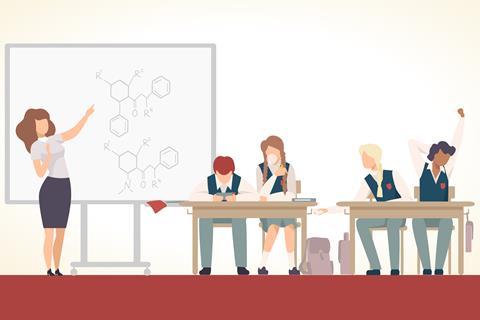Discover why, in most cases, ignoring bad behaviour should be consigned to the classroom bin

I’m sure we’ve all been there. You are at the front of class, about to open students’ minds to the wonder of covalent macromolecules, and you notice out of the corner of your eye one student is doing something not quite right. As a teacher, I’ve always been confronted with a myriad of minor classroom infractions, such as students chewing gum, whispering to each other, or rocking on their chairs. For many years, like countless other educators, I subscribed to the strategy known as strategic ignoring. The strategy seemed to be an effective way to maintain the flow of the lesson, preventing teacher-led disruption arising from constant corrections.
However, as I delved deeper into understanding psychology and social norms, I realised that this strategic ignoring might not always be the best approach, particularly with students prone to larger infractions.
The psychology behind it
My perspective shift was informed by the social learning theory pioneered by Albert Bandura and his famous ‘Bobo Doll’ experiment, in which children observed and then imitated behaviour modelled to them by adults. The crucial aspect of this research was the concept of vicarious reinforcement, which demonstrated that children’s learning from observed behaviour was amplified if the role model was praised or punished afterwards. This research has significant implications for classroom management. If we strategically ignore minor infractions, we inadvertently establish that such behaviour is acceptable. After all, as the saying goes, what you permit, you promote.
Therefore, when we allow a student to break a rule without consequences, even if it seems a small infraction, we inadvertently reward them with a sense of status. Over time, other students may notice this and may begin to emulate the behaviour. This creates a new norm within the classroom, which becomes difficult to rectify. The first student to be reprimanded for this previously permitted behaviour might feel unjustly treated and may disregard further attempts to correct their behaviour.
Respond quickly and subtly
The challenge, then, is how to respond to these small infractions without disrupting the class or drawing undue attention to them. The solution may lie in implementing the ‘least invasive intervention’, proposed by Doug Lemov in his book Teach like a champion.
These interventions could be as subtle as a gesture – moving closer to the source of the disruptive behaviour, or delivering a well-timed teacher’s glare. Common gestures are moving a hand up and down to signify calming down, or a quick finger pointing up in the air to catch a disruptive student early.
My favourite method for handling gum chewing is taking the bin, without disrupting my teaching flow, walking over to the student and putting it in front of them. It’s a silent, non-confrontational way of addressing the issue, maintaining the class dynamic and upholding behavioural standards. Most importantly, it allows me to continue with my explanation or questioning so the other students don’t lose learning time.
Of course, if a student is at risk of causing a large disruption or isn’t paying any attention, I may need to break the flow. In this situation, I need to choose the quickest and simplest verbal correction possible. For example, instead of saying ‘stop turning around and look at me, Stephen’, I say ‘everyone’s eyes on the board’ or ‘everybody should be tracking me’. Including the whole class uses the disruption to refocus all students and hopefully get a few who might have been drifting off back on track.
Get the balance right
While strategic ignoring can be useful in specific scenarios – particularly when students have certain self-regulation challenges or tics – this strategy should be used judiciously and in consultation with special educational needs and disabilities experts. This approach prevents the normalisation of disruptive behaviour as students do not typically view such individuals as role models. However, we must be cautious to ensure that the strategic ignoring approach does not inadvertently establish negative social norms within our classrooms. We must tailor our classroom environment to maximise learning, by striking a balance between correcting students’ behaviour and the impact the correction has on the rest of the students’ learning.
Adam Robbins














No comments yet